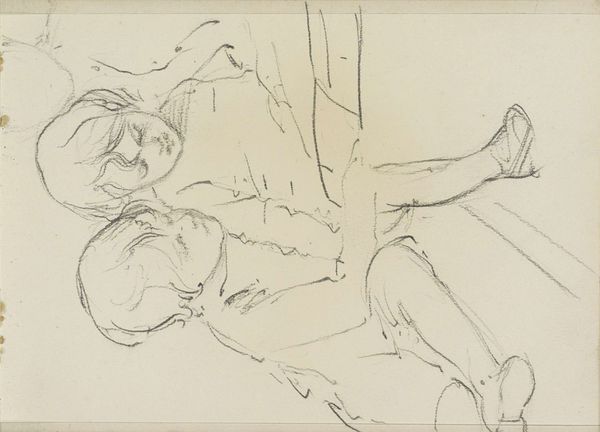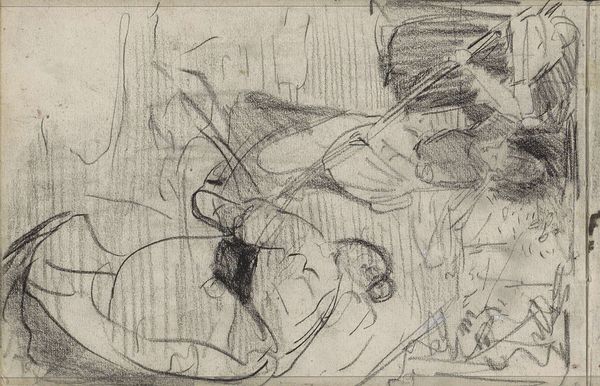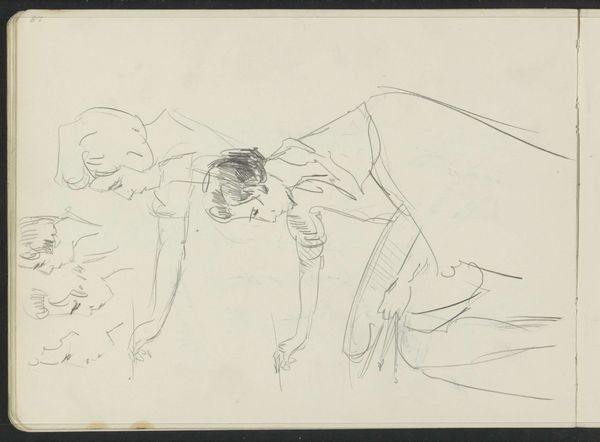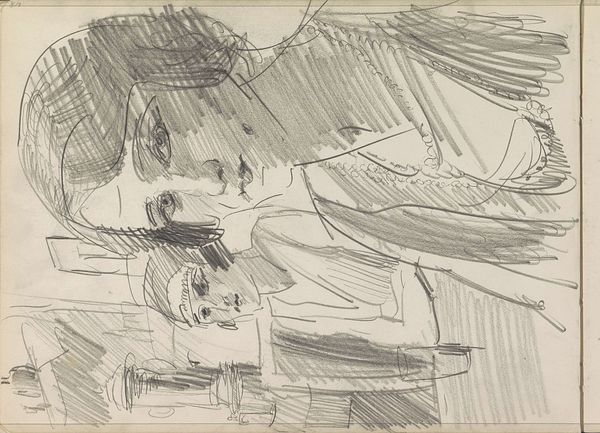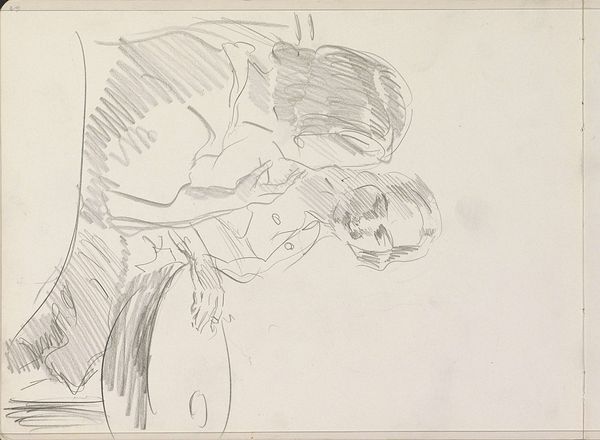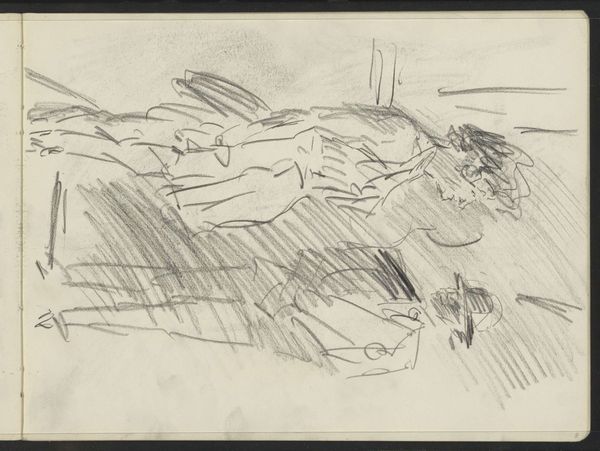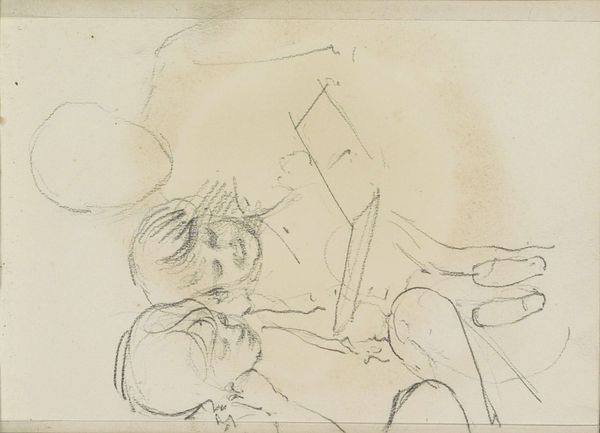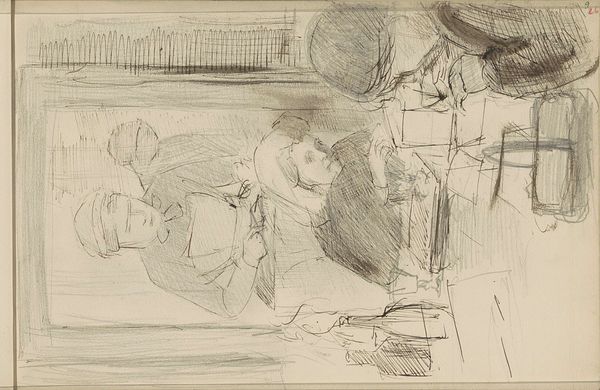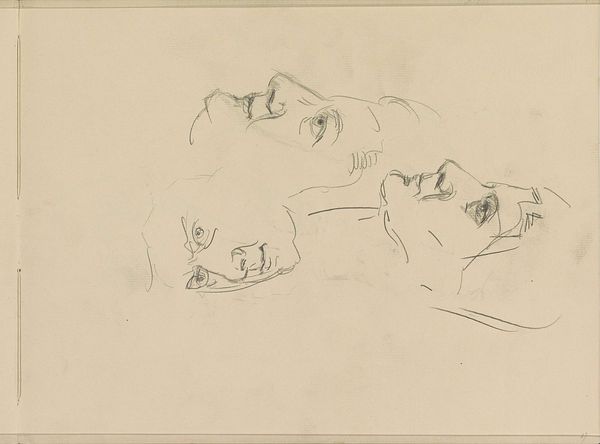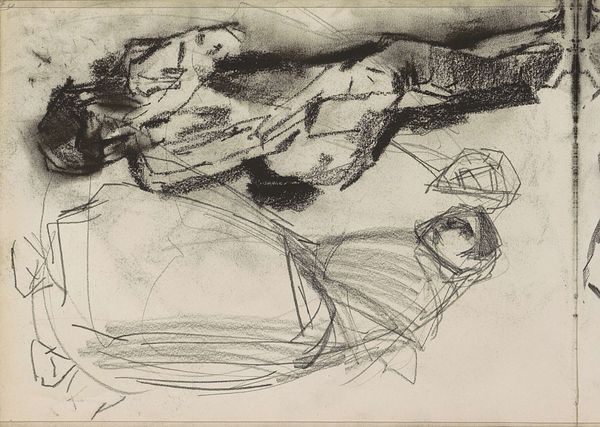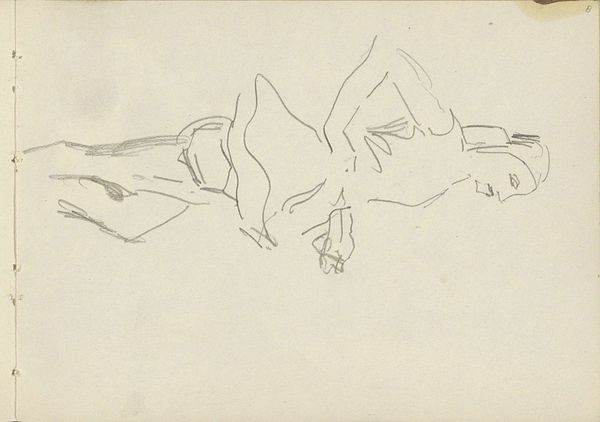
Copyright: Rijks Museum: Open Domain
Curator: The quickness of this sketch immediately strikes me; there's a definite casual air. It's untitled, rendered on paper in pencil and known as "Interior with a Sitting Man and Woman". Isaac Israels created it sometime between 1875 and 1934 and it currently resides here at the Rijksmuseum. Editor: Yes, "casual" is the right word. It has that spontaneous, intimate feel—like a fleeting moment caught on the page. I see more than just two figures, though. Don’t you get a sense of the domestic rituals from it? Perhaps the couple is resting after or before their engagements? Curator: It's interesting how Israels positions them. They're lounging, perhaps taking a momentary pause. What resonates most strongly is Israels’ own position as an artist operating within certain societal constraints but attempting to liberate modes of depiction, echoing Impressionist inclinations toward fleeting perceptions. Editor: The body language seems significant to me. Consider the woman's face tilted up and perhaps focused somewhere. The man in contrast almost merges in the shadows of the couch. This might suggest particular power dynamics of men and women during that time. Don’t you think? Curator: Precisely. While impressionism sought to depart from traditional painting, there remained implicit power structures embedded within its framework. How could one capture authenticity or “the now” without also implicating themselves and their own context? It's evident in the light brushstrokes that feel, perhaps deceivingly, unintentional. Editor: Those deceptively casual strokes… I’m tempted to explore them as intentional choices, reflecting shifting attitudes toward gender roles. He sketches with light and shadow here, but more symbolically—what we see, what is kept from us in those marks, holds deeper social implications, isn't it? Curator: In considering "Interieur met een zittende man en vrouw", there's a lot to consider—that it reflects not just a captured instant but embodies shifts in artistic expression. Editor: And invites us to contemplate what has persisted symbolically and subconsciously over decades, if not longer.
Comments
No comments
Be the first to comment and join the conversation on the ultimate creative platform.
